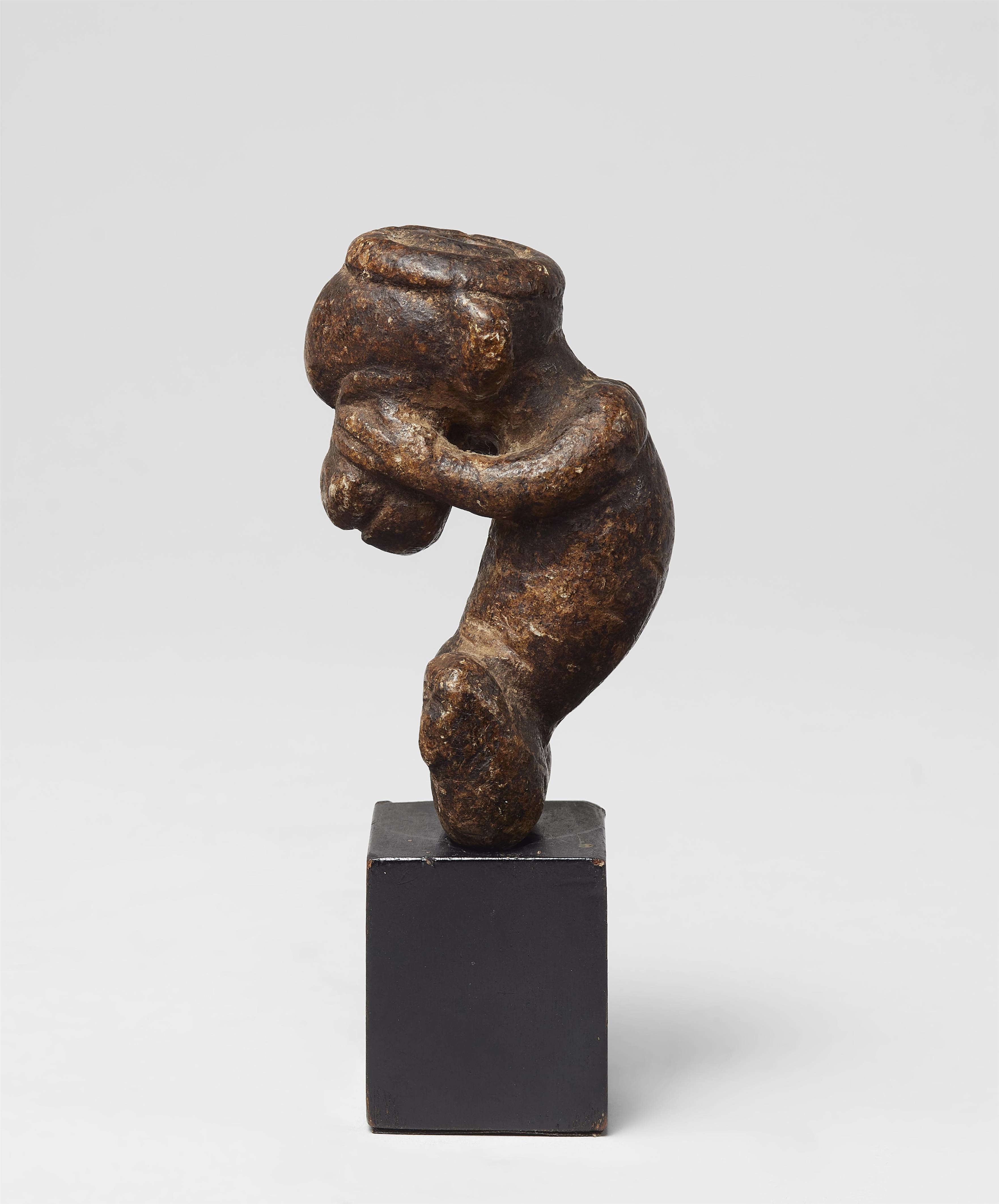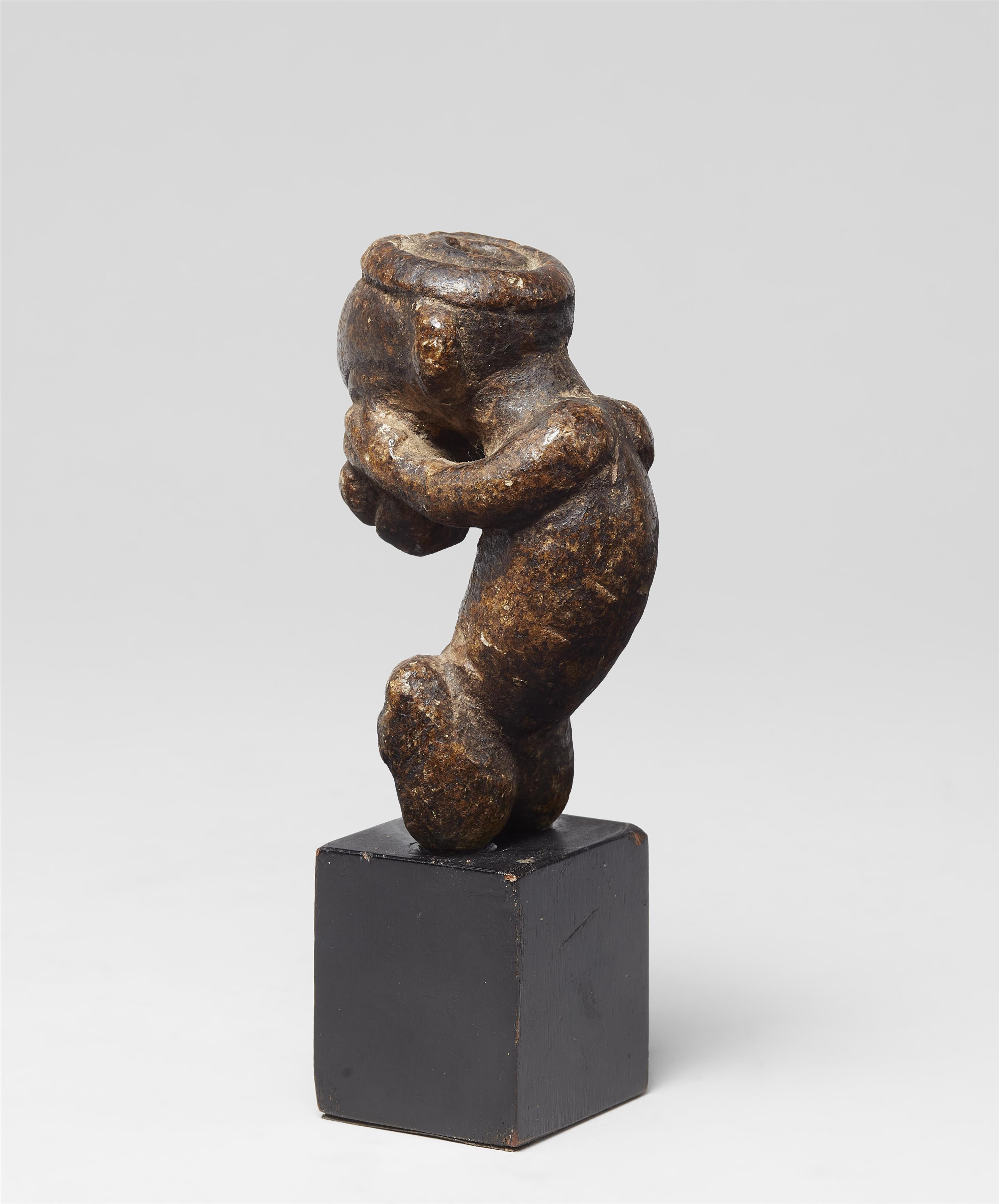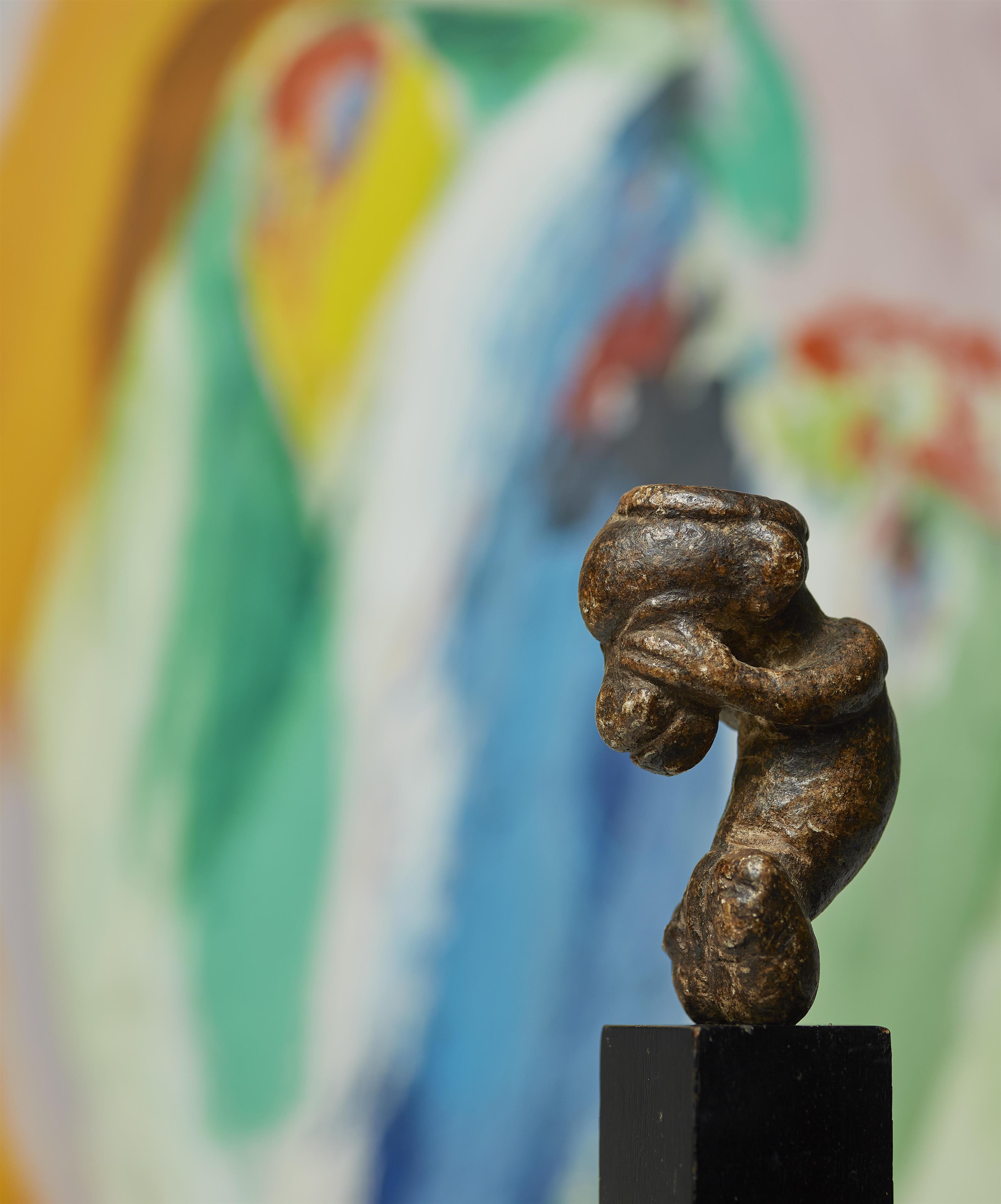SAPI STONE FIGURE
nomoli
Sierra Leone
9 cm. high
Kenneth John Hewett, 1919-1994
John Hewett was born in Ealing, West London, in 1919, into a staunch Plymouth Brethren family of modest means - his grandparents who lived next door to his parents ran a removal business with a horse-drawn van. He left school aged just fourteen and worked at the Ealing branch of the newsagent and bookseller, W.H. Smith, and also ferried books on his bicycle for a local book dealer, developing a passion for books that would stay with him for life. John engaged in pursuits typical of youths at the time - trainspotting and playing cricket with wickets painted on the wall, but more unusual were the regular trips he made alone by bus to the British Museum where his knowledge and passion for objects would develop from an early age. John epitomised the words of Henri Matisse, ‘Seeing is in itself a creative act which requires effort’.
At the outbreak of war John enlisted in the Scots Guards and served in North Africa where he was badly wounded and sent to convalesce in southern Italy. There he met Spike Milligan, amongst others, and became an active member of the arts club, contributing poetry to the club’s magazine. He also played an active role in the re-opening of the Naples archaeological museum where the knowledge he had acquired from his trips to the British Museum made him the natural choice as museum guide for a visiting general.
After the war a friend offered John a space in a window in a shop in Richmond and he later moved to a small shop at the bottom of Sydney Street off the Kings Road from where he would tour the salerooms and shops tirelessly by moped. He began to be noticed. His interest in ethnographic objects encompassed a remarkably wide range of world cultures. His customers included Jacob Epstein and Douglas Newton who became a regular visitor and later acknowledged his indebtedness to John, recalling how it was John introducing him to Stéphen Chauvet’s book on New Guinea art which led to his life-long passion for the Sepik. Douglas would later describe John as “one of the greatest art dealers in antiquities and primitive art of our time”. Peter Wilson, chairman of Sotheby’s, and the dealer, Sidney Burney, were also regulars at the shop. Jack and Gertrude (Putzel) Hunt, the renowned dealers in Medieval art and antiquities and advisers to clients such as William Burrell, William Randolph Hearst and the Aga Khan, met John at this time and the three became great friends. Robert and Lisa Sainsbury became important clients and John had a great influence on their taste, introducing them to Polynesian and Medieval art and antiquities. On their first visit to John’s shop in 1949 they bought six objects and later the same year returned and bought their Rarotonga ‘fisherman’s god’. In the late 1950s Hewett moved to Melrose Road, Putney. His influence would extend through the many contacts he made as a result of his connections with Sotheby’s – notably with Peter Wilson, then chairman, and Bruce Chatwin, then head of Primitive Art and Antiquities, for whom Hewett acted as a consultant. Hewett enjoyed the interaction with collectors and dealers he respected such as David Shaw King, James Keggie, Otto Burchard, Charles Ratton and Marie-Ange Ciolkowska, all of whose judgment and taste he respected. Sven Gahlin, the art-critic, Edward (Teddy) Lucie-Smith, and the documentary film-maker, Robert Eskine, would all acknowledge Hewett’s influence on their taste. He had a sixth sense for quality (authenticity, patina, whether something had been refinished or - his phrase - 'fiddled with') and was generous with his knowledge.
Hermione Waterfield (in "Provenance: Twelve Collectors of Ethnographic Art in England 1760-1990") relates how John would indulge his clients. John knew that George Ortiz enjoyed making discoveries so he would hide a bronze in a drawer and find an excuse to leave the room knowing that George could not resist a forage. Having found it, George would insist on buying it and John would insist it was not for sale. Eventually of course John was persuaded to part with it for a considerable sum. It was Hewett who sold to Ortiz the famous bronze head found in Benin City which George called “bulgy eyes”.
After his friends and business partners, the Hunts, left England John opened a gallery in Bond Street with Sandy Martin and Barbara Hare as his associates. He retired a few years later but continued to deal in a small way for another ten years from a flat in Elvaston Place.
His love of books and his desire to make them available to others led him to publish reprints of a number of early and rare publications; the James Edge-Partington albums of 1890; the Companion to the Leverian Museum of 1790 with the sale catalogue of 1806; the sale catalogue of the Bullock Museum of 1819; the Tradescant Collection of 1656; and Harry Beasley’s Fish Hooks of 1928.
The selection of headrests presented here, all gifts offered by John Hewett to a friend, is a testament to his generosity and also to his taste and connoisseurship, a remarkable achievement from a self-taught man with little formal education.
Provenienz
Angela Heskett, London
Herbert Rieser, London
Dr. Otto Burchard, Berlin
John Hewett, London
Merton Simpson, New York






